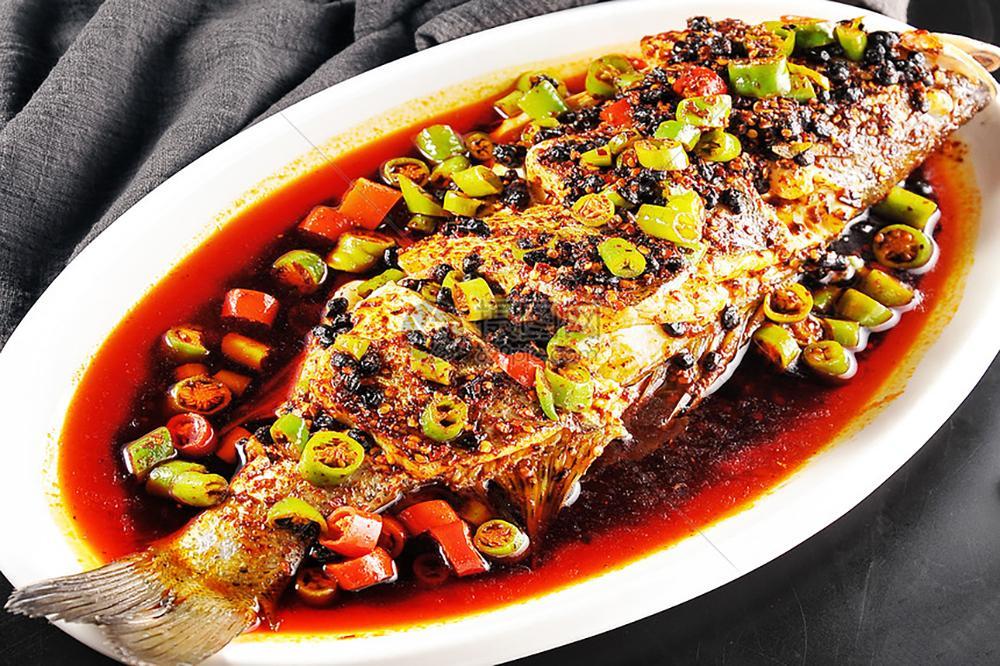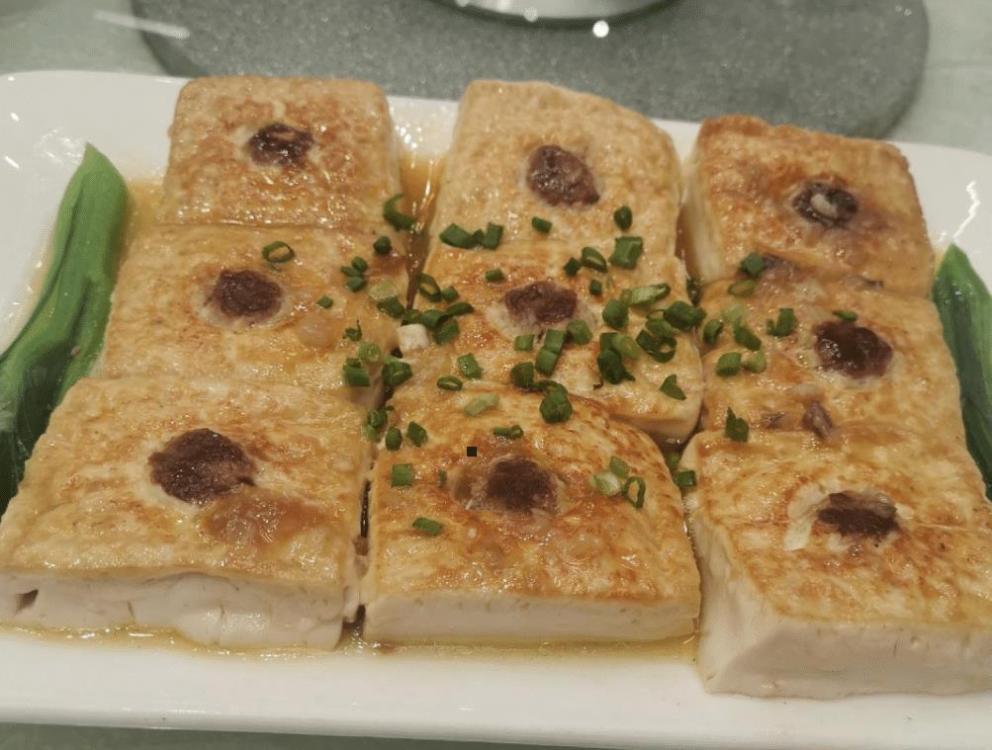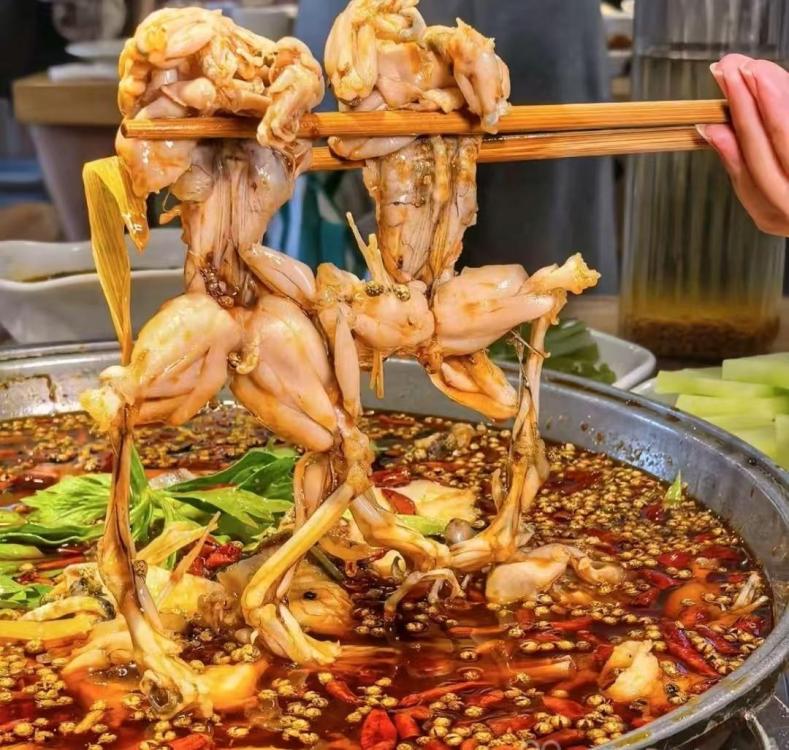安徽菜 (ān huī cài) Anhui Cuisine, 徽菜 (huī cài) Hui Cuisine
安徽 (ān huī), Anhui Province is on the Traditional list of the Eight Cuisines of China, yet it remains the least known, even within China. There are, I would suggest, stronger candidates, not that there is anything wrong with Anhui cuisine. It is however seriously outshone by its neighbours.
Anhui, capital Hefei, is in eastern China.
This file is licensed under the Creative Commons Attribution-Share Alike 3.0 Unported license.
It is known for its use of wild foods terrestrial, airborne and aquatic. Wild herbs, wild mushrooms and bamboo shoots are widely used as are game meats. Although it is landlocked both fresh- and seawater fish are widely used.
Techniques such as braising, boiling or steaming are used much more than the rest of China and stir frying or deep frying much less.
Anhui is also known for being the alleged birthplace of 豆腐 (dòu fu), tofu or soy bean curd. Chinese folklore credits its invention to a Han dynasty prince named 刘安 (liú ān), Liu An, not that princes tend in my very limited experience of such people to indulge in kitchen matters. Sadly, tofu did not grant him longevity as he took his own life at the age of 57. I don’t think that was brought about by tofu, though.
Also, according to Chinese legend, stinky tofu (fermented tofu) was invented by one aspiring scholar, 王致和 (wáng zhì hé), Wang Zhihe who sold his product in Beijing to make a living after failing the imperial examination. He later became a writer; not a chef. Chefs never invent foods in Chinese legends. Chefs never became legendary. His claim to stnky tofu is dubious as different types appear across China, including Taiwn. 八公山臭豆腐 (bā gōng shān chòu dòu fu), Bagong mountain stinky tofu is a traditional local snack in Anhui.
Bagong mountain stinky tofu
蛋饺 (dàn jiǎo), also reputed to be from Anhui but found across China today, are jiaozi dumplings with a twist. Instead of the wrapper being made from wheat flour, it is egg. Sort of a one bite omelette, in fact. Fillings vary widely but pork and chives is most common.
Dan Jiao
Discovering Dan Jiao: A Lunar New Year Dumpling Delight 🥟✨#recipe #shorts - YouTube
One interesting dish from Anhui, 李鸿章杂碎 (lǐ hóng zhāng zá suì), Li Hongzhuang Hotchpotch. This wasn’t invented by Li Hongzhang, a prominent Qing dynasty statesman from Anhui but named so in his honour. The name is often translated as Li Hongzhuang Chop Suey, surely a misnomer. It doesn’t resemble what most of us know as chop suey in any way. The dish is in fact a soup, using among among other ingredients sea cucumber, fish, squid, bamboo, dry tofu, chicken, ham and assorted vegetables.
Lihongzhuang Hotchpotch - Image: n.sinaimg.cn
The province is also known for sweet potato cellophane noodles 红薯粉丝 (hóng shǔ fěn sī), usually sold dried. These I find a bit gummy.
Sweet Potato Noodles
Steamed stone frogs 清蒸石蛙 (qīng zhēng shí wā) are ugly critters resembling, you guesses, stones. However, once skinned and cooked, they are delicious. One of my favourites.
黄山炖鸽子(huáng shān dùn gē zi), Huangshan Braised Pigeon is considered to be a medical tonic served in soup. TCM nonsense as usual. There is no scientific for any significant benefit, but it tastes good. When In I need a tonic, I add gin and maybe a slice of lime, but no pigeon or soup.
Pigeon Soup - Image: guangyuanol.cn
Finally, 臭鳜鱼 (chòu guì yú), stinky mandarin fish sounds terrible, but isn’t so bad. It’s just fermented then fried fish. Nothing like Icelandic hákarl, fermented shark or Swedish surströmming, fermented herring!
Nothing like Icelandic hákarl, fermented shark or Swedish surströmming, fermented herring!

Stinky Fish
Otherwise uncredited images are from Meituan online shopping app.


_svg.thumb.png.2c239c3f4be60479902c3581ad4afd5b.png)







